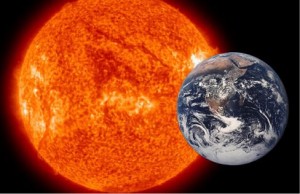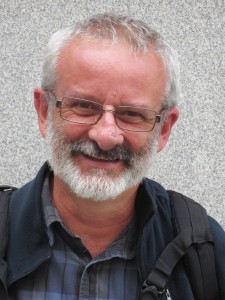
Basics: Sun facts, basic concepts of solar structure (scaling arguments), pressure, temperature and luminosity. Solar neutrino problem: solar energy source, the spectrum of solar neutrinos, experiments (Homestake, Gallex, SAGE, Super-Kamiokande, SNO), neutrino oscillations. Solar Spectrum: interpreting solar spectrum, radiative transfer basics, and limb darkening in a resolved star, real atmosphere models, second solar spectrum, solar Balmer spectrum and H-/H ratio. Stellar turbulent convection: Rayleigh-Bénard convection, instability criteria (Ledoux and Schwarzschild), the adiabatic temperature gradient, the convection zone, new paradigm of stellar turbulent multiscale convection, regimes of magneto-convection, convective collapse. Helioseimology: solar oscillations, pressure and gravity waves, p-modes and g- odes, propagation of gravity waves, Brunt-Väisälä frequency, helioseismology results (solar rotation profiles, torsional oscillations, tachocline), time-distance helioseismology. Stellar global dynamo: solar global dynamo, solar cycles, butterfly diagram, Hale’s polarity law, Joy’s law, the reversal of magnetic field, ephemeral regions (EPRs), the Babcock-Leighton dynamo, MHD regimes, plasma flows over the Sun, small magnetic element advection, solar activity and small scale dynamics, exoplanets detection and stellar noise: the solar lesson. Solar Drivers of Space Weather: the connection photosphere-chromosphere-Corona, coronal holes, flares, Coronal Mass Ejections (CMEs), solar wind, Co-rotating Interacting Regions CIRs), the Interplanetary Magnetic Field (Parker Spiral). Flare forecasting algorithms: forecast M-and X-class solar flares, photospheric magnetic field proxies and active regions parameters, active region parameter formulae, MOTH telescope and 3d solar magnetic field. Sun and Earth’s climate: solar influence on climate, the faint young Sun paradox, Total and Spectral Solar Irradiance, solar magnetic variability, Milankovitch cycles and Earth’s orbit (eccentricity, obliquity, precession), solar modulation of Cosmic Rays, stratospheric ozone and solar spectral variability.
Instructor Information
Prof. Franc esco Berrilli
esco Berrilli
Webpage: https://www.fisica.uniroma2.it/~berrilli/
Email: francesco.berrilli – at – roma2.infn.it
Office: D1 4430 Laboratory: D1 4552
Phone: (+39) 06-7259-4430/4552
Office Hours: Tu 2-3 pm in the office, or by appointment
ECTS: 6
Italian Degree: Laurea Magistrale Dm.270/04
Astromundus Degree: Erasmus Mundus Joint Masters Degree programme in Astronomy and Astrophysics



